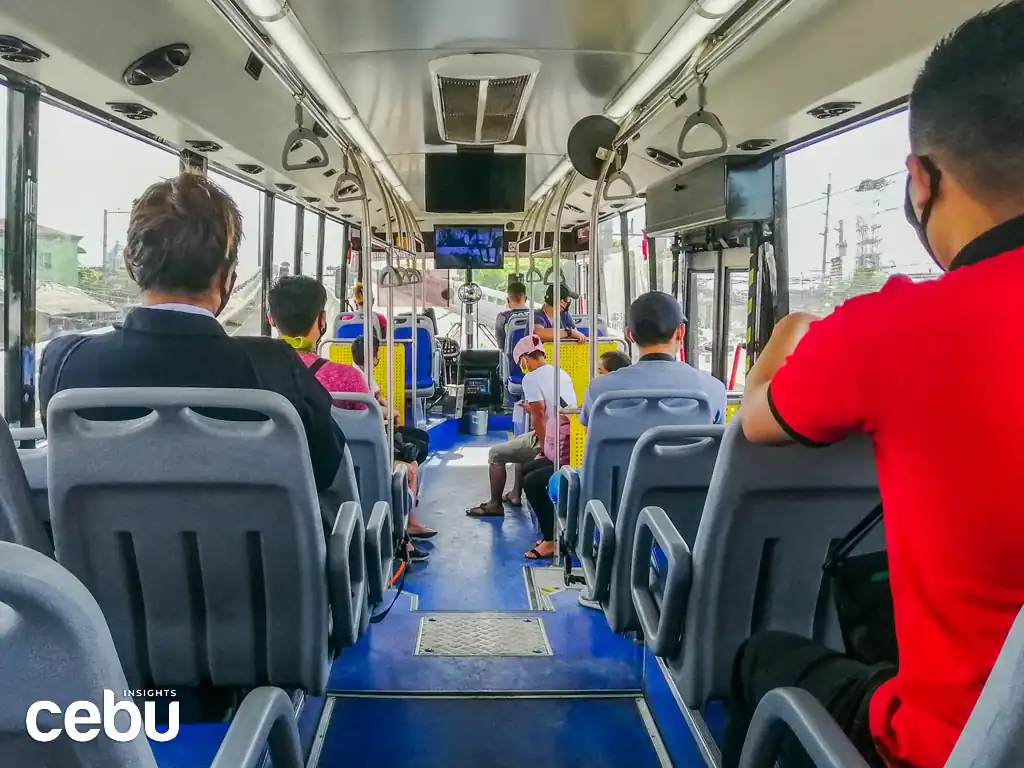The Cebu Bus Rapid Transit (BRT) project will start construction next year.
In 1996, the Cebu City government proposed a bus rapid transit system (also known as BRT), offering an outlet to ease traveling and transportation woes in the city.
Unfortunately, the government delayed the project due to changes in its designs, routes, and road right-of-way (RROW). However, there is hope for this project to operate in full swing.
Construction on Package 1 of the project will start in January 2023, wherein bus stations, bus stops, and other infrastructure will be built for the Cebu South Bus Terminal on the Cebu Provincial Capitol route.
This route may partially operate during the fourth quarter of 2023 and be fully operational by the second quarter of 2025.
The construction of Package 1 is notable, as the bus rapid transit system was proposed by the Cebu City government to improve the traffic situation in the city.
WHAT IS A BUS RAPID TRANSIT SYSTEM?
According to the Institute of Transportation & Development Policy (ITDP) website, a bus rapid transit system is a high-quality bus-based transit system delivering comfortable and cost-effective services in metro cities.
Dedicated lanes, bus stations, and off-board fare collection bring more convenience to the daily commute of the public.
ITDP mentions five essential features that define a bus rapid transit:
- Dedicated Right-of-Way
Bus-only lanes keep buses away from the traffic congestion on regular roads and highways.
- Busway Alignment
Having their own lane means that buses can avoid busy sidewalks where cars and other vehicles park.
- Off-Board Fare Collection
Passengers pay the fare at the station, similar to the MyBus terminals at the SM malls, removing the delay caused by passengers paying on board.
- Intersection Treatments
Keeping other vehicles from taking the bus lane will prevent further delays and traffic. This will also make it easier for buses to turn around at intersections.
- Platform-Level Boarding
This will make boarding quicker and easier to and from the platform. This also makes wheelchairs, disabled passengers, and strollers easier to bring inside the bus.
HISTORY OF THE CEBU BRT
The Cebu bus rapid transit system was initially a stand-alone project, but later became part of the Metro Cebu Integrated Intermodal Transportation System (MCIITS).
The MCIITS included other proposed infrastructure projects like cable cars and monorail transport systems. The Cebu Integrated Bus Service (CiBus) also served as a precursor to the BRT.
In 2022, the Department of Transportation (DOTr) started earth-balling more than 200 trees to signal the start of construction. You can see where these stations will be as you pass by Osmeña Boulevard.
Here are the proposed routes for the bus rapid transit system in Cebu. (Photo courtesy of Cebu BRT Facebook page)
PACKAGE 1
The CSBT-Capitol route might be partially operational by the end of 2023, with construction starting in January. This also includes the establishment of trunk lines and the improvement of sidewalks.
Cebu City councilor James Cuenco – the chairperson of the transportation committee – mentioned that he hopes Package 2 & 3 will be constructed simultaneously with Package 1.
Cuenco voiced concerns about how short Package 1 is in length, as it forces passengers to ride in a separate vehicle when they arrive at the Capitol terminal.
Packages 2 & 3 include a route from Cebu South Road Properties (SRP) to CBST and from Capitol to IT Park in Barangay Apas. Management will also construct terminals at SRP and IT Park soon.
The BRT can benefit Cebuanos by giving them a more hassle-free commute.
ITS EFFECT ON COMMUTERS
Not everyone in Cebu province may benefit from the bus rapid transit system, but the public will eventually see its advantages in the long run.
Project lead Norvin Imbong mentioned that this will help reduce traffic in uptown areas. CiBuses will also have lanes to make traveling much smoother.
Once all 3 packages are complete, it will prepare Cebu City for even bigger transportation projects to make commuting less of a hassle.
Package 1 is a much-needed development, especially for those who rely on public transport to travel around the city. It may take some time to see its full potential, but this could drastically help lessen the public transportation problems that Cebuanos face every day.
Hopefully, this project will finally push through so we can experience a more sophisticated, comfortable, and budget-friendly trip around the city.








